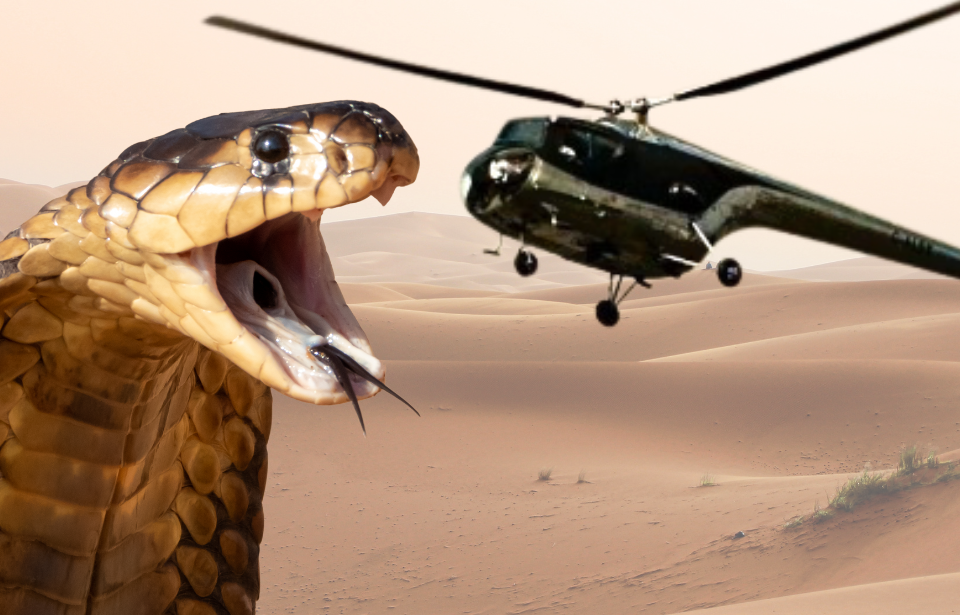Col. Remy Van Lierde would be worth studying for his incredible military exploits alone – the fact he claimed later in life to have encountered a supernaturally large snake is just a bonus. He was a World War II air ace who became an inspiration to Belgians after he escaped the German occupation and joined the Royal Air Force (RAF). He was a skilled pilot who rose through the ranks accordingly, and he became especially well-known for shooting down dozens of V-1 flying bombs.
After the war, Van Lierde held several important commands, including serving as an aide to King Leopold III. He also worked as a test pilot. It was on one of his later missions that he allegedly came across a 50-foot snake in the Belgian Congo.
German occupation of Belgium
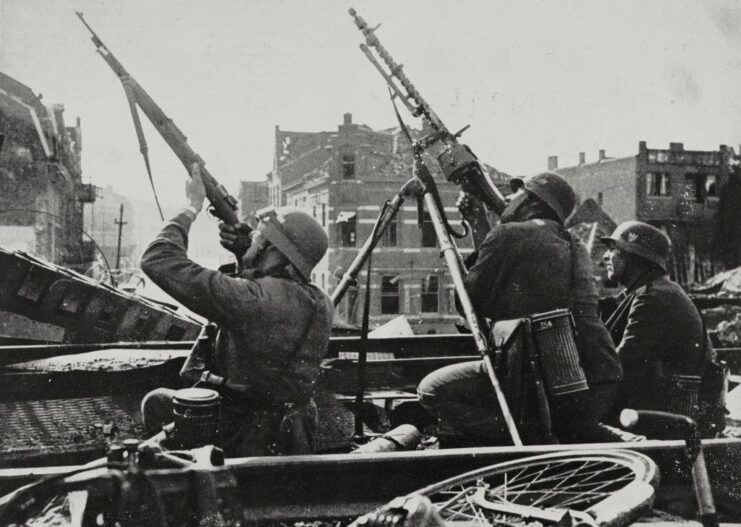
Little is known about Remy Van Lierde’s life prior to him joining the Belgian Air Force, aside from the fact he was born in the city of Overboelare on August 14, 1915. When he enlisted in 1935, he originally trained as an observer, before undergoing pilot training a year and a half later. Following this, he was assigned to the 3rd Squadron, 1st Aviation Regiment, stationed at Goetsenhoven Airfield.
Prior to the German invasion in May 1940, Van Lierde conducted several reconnaissance flights. When the enemy broke through Belgium’s borders, the then-sergeant had little opportunity to fight back. He was wounded and captured when his outdated Fairey Fox III biplane was shot down by flak six days into the invasion. The entirety of Belgium was conquered in only 18 days, before he even got out of the hospital.
Despite this inauspicious start and the fall of his homeland, Van Lierde was determined to continue fighting. After taking a few months to recover from his injuries, he snuck through France, which had also been conquered by Germany, and into Spain.
Unfortunately for Van Lierde, he was captured by Spanish authorities while illegally crossing the border. He was sent to multiple prisons and even a concentration camp in Miranda de Ebro, but escaped and boarded a ship for Britain. He arrived in England on July 22, but, as a foreign national, had to go through wartime detention and interrogation by MI5.
After six weeks of bureaucracy, Van Lierde was allowed to join the RAF Volunteer Reserve.
Remy Van Lierde’s service with the Royal Air Force (RAF)

Thanks to his previous flying experience, Remy Van Lierde was able to enter combat after a relatively short training period. After three months of learning how to fly Supermarine Spitfires with No. 57 Operation Training Unit RAF, he was given the rank of pilot officer and assigned to No. 609 Squadron RAF, which was home to many other expats, including a number of Belgians.
After flying several missions (one of which saw him damage a Dornier Do 217), Van Lierde recorded his first kill on January 20, 1943 while defending London from an air raid; he shot down a Messerschmitt Bf 109-G while flying a Hawker Typhoon.
His next victory came over his homeland and, in an incredible twist of fate, it was witnessed by his wife, who was still living in Belgium. On March 26, No. 609 Squadron RAF was sent to attack the Luftwaffe airfield at Chièvres, in western Belgium. During the engagement, Van Lierde shot down a Junkers Ju 52. Following the Second World War, his wife showed him pieces of the destroyed aircraft.
Van Lierde would go on to achieve four more kills before the end of the year. In May, he went on a bombing mission, during which he became the first person to ever drop bombs from a Typhoon, and he managed to down a Heinkel He 111 while returning to base. He was awarded the Distinguished Flying Cross the following month, and shot down a second Bf 109 that July.
In October, Van Lierde added a Junkers Ju 88 to his list of aerial victories, and he destroyed a second aircraft on the ground during the same mission. His final victory against manned enemy aircraft came on November 30, when he shot down a Messerschmitt Bf 110. In regard to ground targets, Van Lierde was credited with 250 damaged or destroyed vehicles; six damaged ships; and nine destroyed locomotives.
An unmanned threat
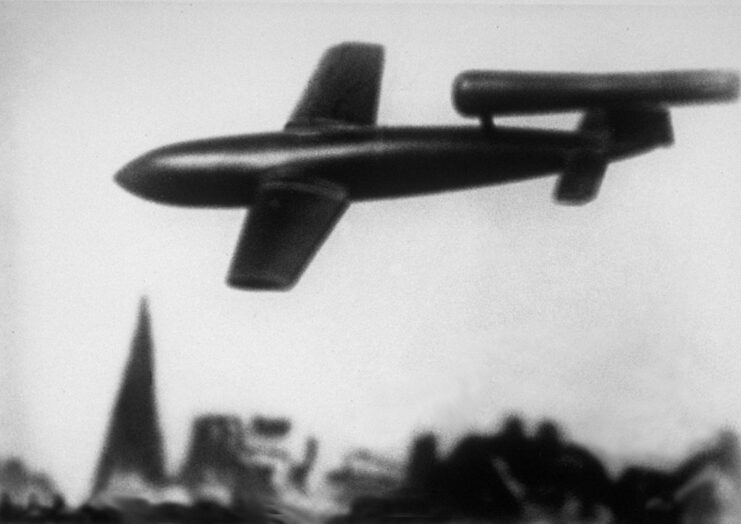
Although six kills in the air and one on the ground already made Remy Van Lierde an air ace, his greatest military successes were still ahead of him. On August 20, 1944, he was promoted to squadron leader and put in charge of No. 164 Squadron RAF. Flying the Hawker Tempest Mk. V, he and his men were told to defeat a new type of weapon: the V-1 flying bomb.
The V-1 was an unmanned munition – an early sort of cruise missile. The “V” comes from the German word Vergeltungswaffen, or “Revenge Weapon,” and, indeed, it was used to exact revenge following the Allied landings in France. Nearly 10,000 were fired at Britain between 1944-45, inflicting several thousand casualties.
V-1s could travel at around 400 MPH when launched from the Walter catapult, which made them difficult for most aircraft to catch. Fortunately, No. 164 Squadron RAF’s Tempests were up to the task.
Van Lierde flew into history by defending Britain from the V-1s, shooting down 44 personally and sharing in the destruction of nine more. This gave him the second-highest kill count against the flying bombs of any pilot during the war, resulting in him being awarded two bars for his Distinguished Flying Cross.
Remy Van Lierde’s post-war exploits
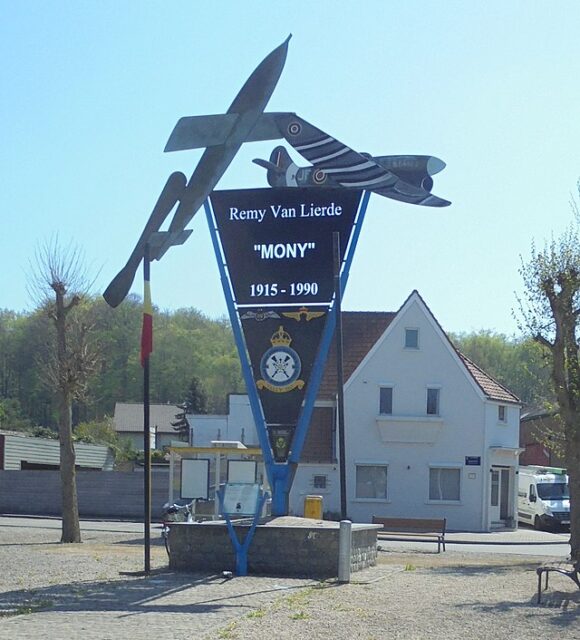
Remy Van Lierde led No. 164 Squadron RAF throughout the western campaign of 1944-45, after which he served as a liaison officer at the Allied Second Tactical Air Force Headquarters and with No. 84 Group Support Unit RAF. These positions were followed by a move to No. 350 (Belgian) Squadron RAF.
His time with the RAF came to an end in 1946, when he was commissioned into the Belgian Air Force as a major and assigned to the 1st Fighter Wing, stationed at Beauvechain Air Base. He held a number of positions, but the most notable came in 1953, when he was appointed to the Operations Group of Chiefs of Staff. On top of this, he became an aide to King Leopold III.
Van Lierde also served as a test pilot in 1958, when he returned to the United Kingdom to test a Hawker Hunter, some of which would be supplied to the Belgian Air Force. Along with Capt. Yves Bodart, he became the first Belgian to break the sound barrier during that flight.
Toward the middle of the decade, Van Lierde was named the Deputy Chief of Staff to the Ministry of Defence. In 1959, he was given command of Kamina Air Base in the Belgian Congo. However, this was short-lived, as the region became independent a year later. He attained the rank of colonel, before retiring in 1968.
Taking on a 50-foot snake… Allegedly
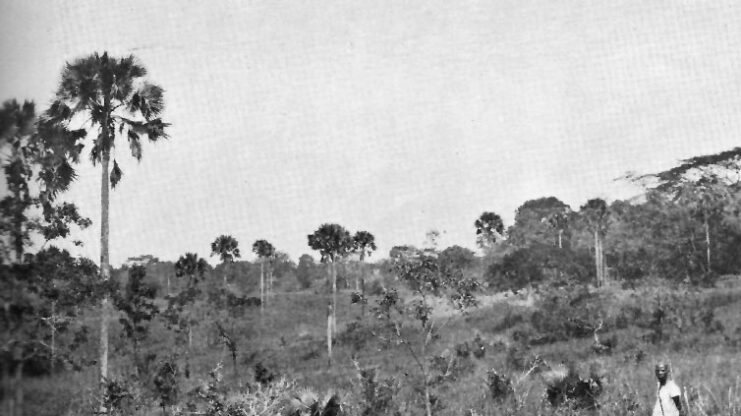
During his time at Kamina Air Base, Remy Van Lierde had one last great adventure. In 1980, he went on the British television show Arthur C. Clarke’s Mysterious World to describe an encounter with a monstrous snake that was larger than any that had been previously observed.
Van Lierde claimed he saw the reptile while flying over the Congo in a helicopter. It was about 50 feet long, with a triangular jaw. He said that he tried to approach the snake, but it raised up around 10 feet, making a closer approach risky. A passenger on the chopper managed to take a picture of the massive creature and, although an exact measurement is impossible to make from just a photograph, it’s clearly a remarkably large serpent.
There are some problems with this story. Firstly, the largest snake in the world, the green anaconda, is only known to grow up to 30 feet. Second, such a large reptile would have difficulty surviving, due to its own weight; it would likely end up crushing its own organs. Finally, even if such a specimen could support its weight, it certainly couldn’t rise 10 feet into the air.
It seems Van Lierde did encounter a remarkably large snake, perhaps even a new species, but since he was some distance away and in the air, he may have overestimated its size.
More from us: Panzerschreck: Germany’s Much More Powerful Version of the American Bazooka
While his knowledge of snakes may have been spotty (or exaggerated), Remy Van Lierde’s skills as a pilot cannot be challenged. He passed away in 1990, and is remembered for being a renowned air ace who did everything he could to fight back against the German occupation of his homeland.
